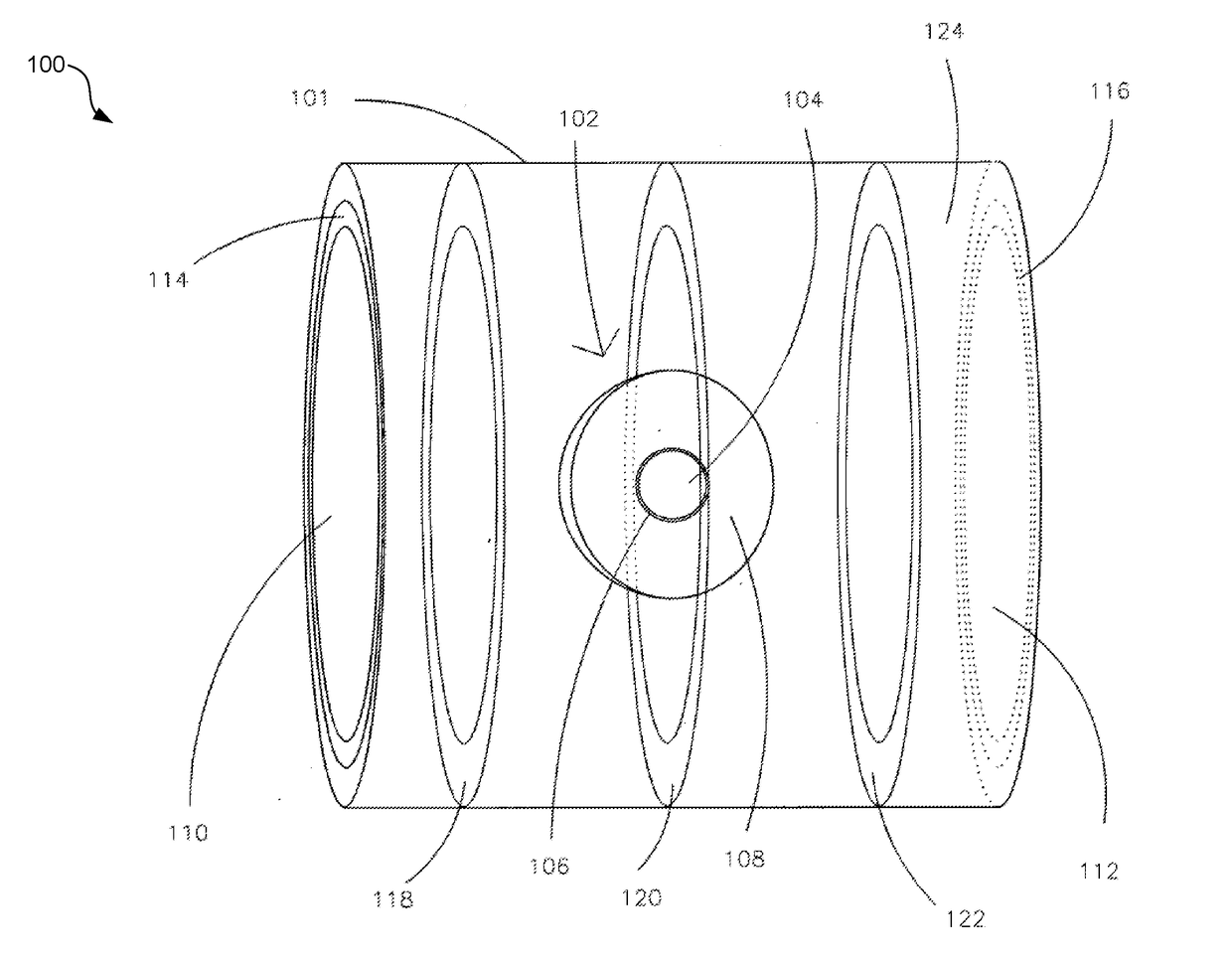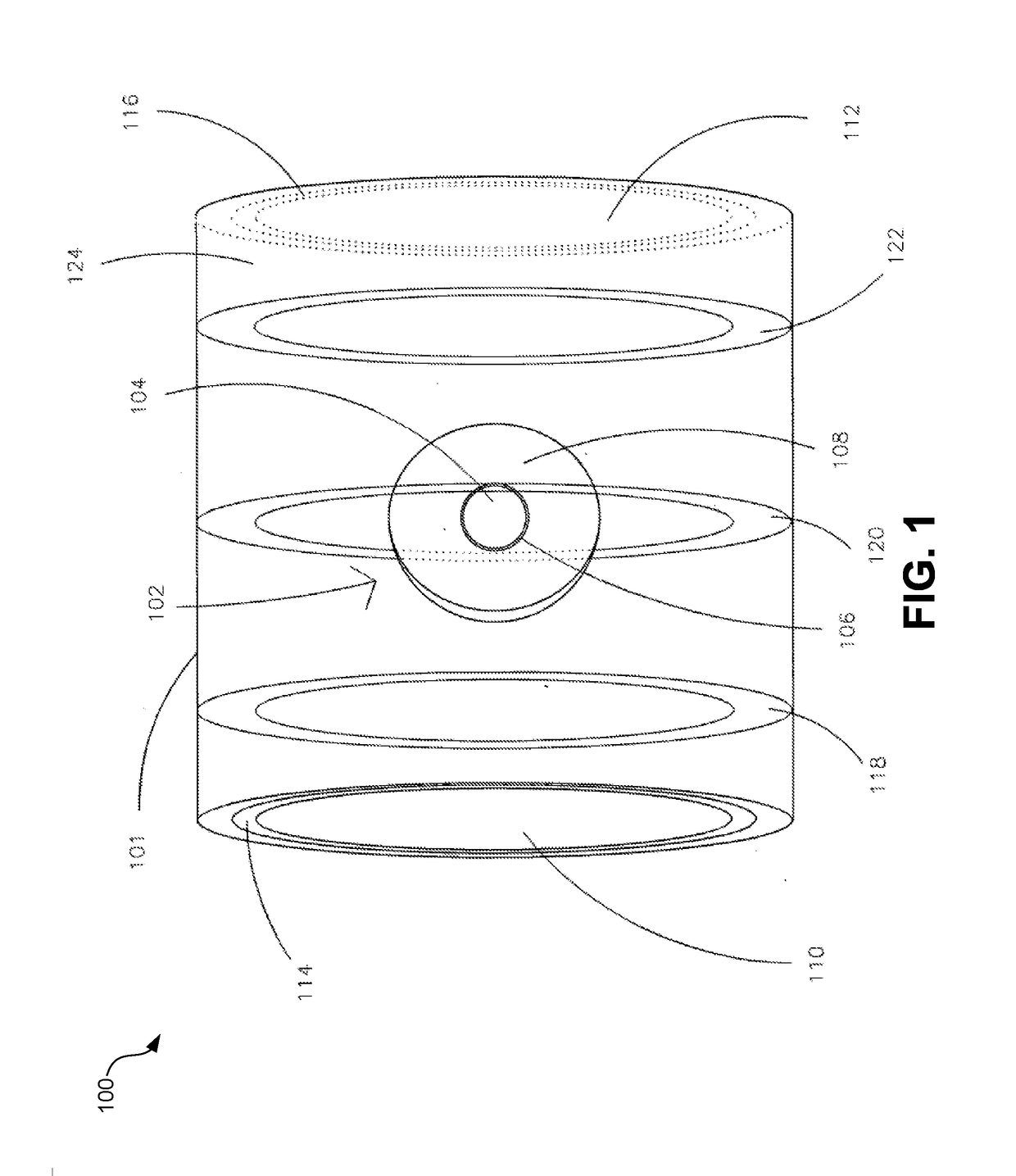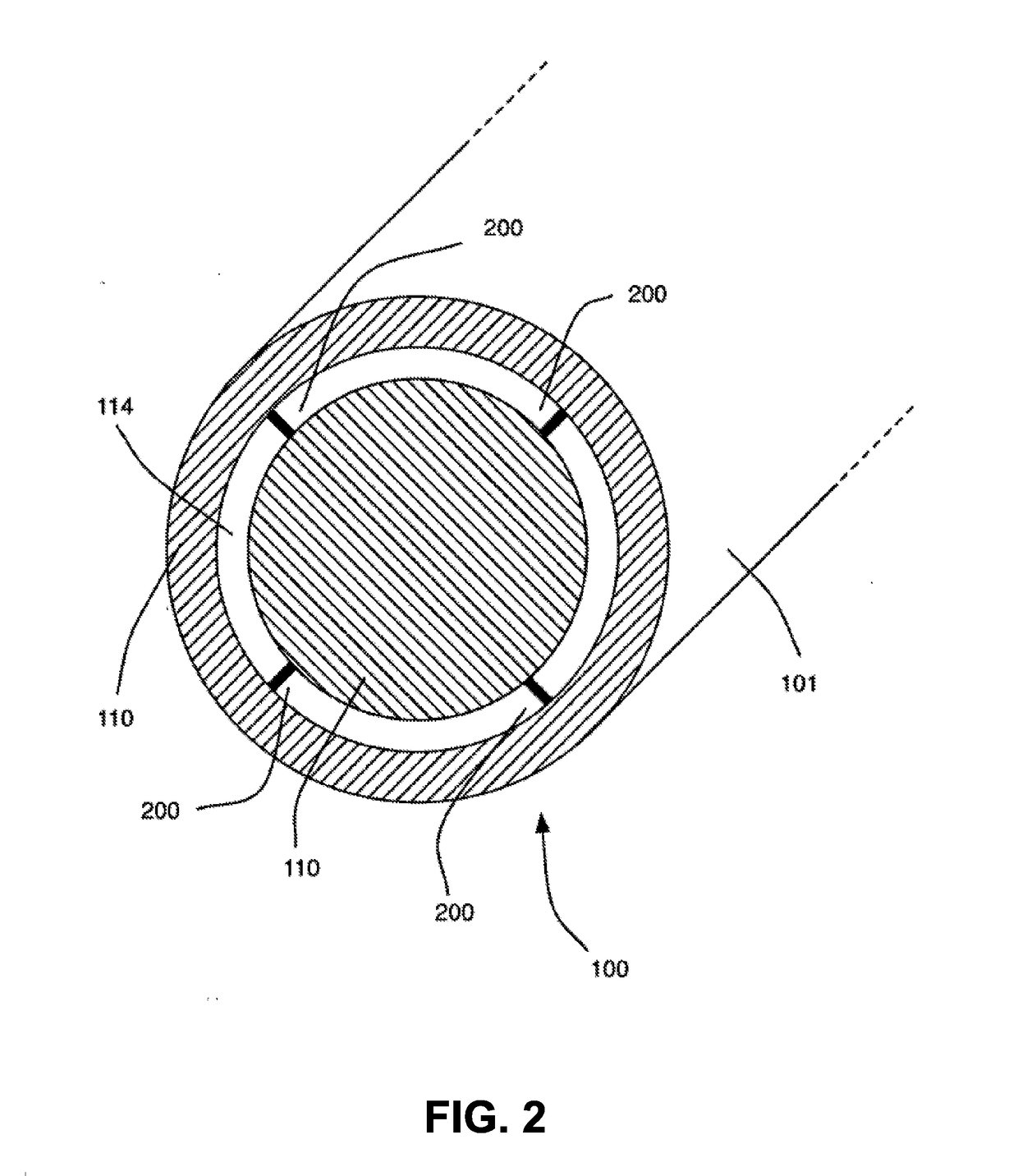Simple and Robust Implosion of ICF Targets
a target and implosion technology, applied in the field of simple and robust implosion of icf targets, can solve the problems of high temperature and densities required for fusion ignition that may require a substantial amount of energy, complex design construction and operation, and sensitive to imperfections in the manufacturing of target parts, so as to reduce radiation losses, suppress fluctuations and non-uniformities, effect of reducing radiation losses
- Summary
- Abstract
- Description
- Claims
- Application Information
AI Technical Summary
Benefits of technology
Problems solved by technology
Method used
Image
Examples
Embodiment Construction
[0019]The term “Z” may refer to the atomic number of an element, i.e. the number of protons in the nucleus. The term “A” may refer to the atomic mass number of an element, i.e. the number of protons and neutrons in the nucleus.
[0020]The term “approximately” includes a given value plus / minus 15%. For example, the phrase “approximately 10 units” is intended to encompass a range of 8.5 units to 11.5 units.
[0021]The term “isentropic drive mechanism” may refer to a drive mechanism that is designed or utilized to compress material (such as fusion fuel) in an isentropic manner. “Isentropic” means compressing material while minimizing the total entropy increase (heating) of the material. Isentropic compression is therefore the most efficient way to compress material. When imploding a sphere or shell of material, such as an ICF target, isentropic compression requires that the drive mechanism deliver pressure to the material in a specific way over the entire duration of the compression, utili...
PUM
 Login to view more
Login to view more Abstract
Description
Claims
Application Information
 Login to view more
Login to view more - R&D Engineer
- R&D Manager
- IP Professional
- Industry Leading Data Capabilities
- Powerful AI technology
- Patent DNA Extraction
Browse by: Latest US Patents, China's latest patents, Technical Efficacy Thesaurus, Application Domain, Technology Topic.
© 2024 PatSnap. All rights reserved.Legal|Privacy policy|Modern Slavery Act Transparency Statement|Sitemap



